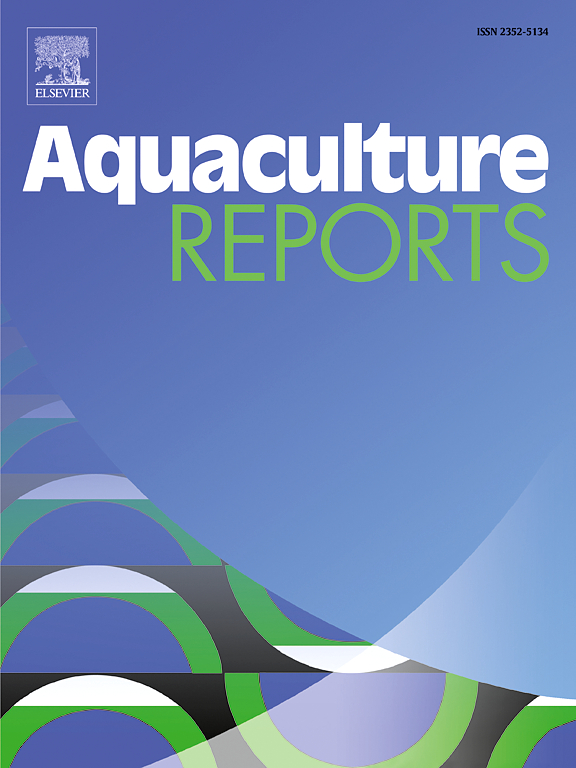Rapid determination of the physiological temperature range for the giant freshwater prawn (Macrobrachium rosenbergii)
IF 3.2
2区 农林科学
Q1 FISHERIES
引用次数: 0
Abstract
Current methods for determining the physiological temperature ranges of prawns rely more on the prawns’ external behavior than on their intrinsic physiology. However, detecting distress in benthic crustaceans, such as prawns, on the basis of external behavior is challenging because these organisms do not close their eyes, have expressionless faces, and often remain dormant with minimal body movement. To address this challenge, we developed a method for rapidly determining the physiological temperature range of giant freshwater prawn (Macrobrachium rosenbergii). This method helps determine the critical temperature limits, thermal tolerance range, pejus temperature, and optimal performance temperature without requiring large samples or extensive long-term behavioral observations. It assumes that the respiratory and circulatory systems respond to temperature changes in a coordinated manner. Electrophysiological methods are used to record the electrocardiogram of animals to convert heart rate; and the signals generated by scaphognathites rubbing electrodes during their movements are used to convert respiratory rate. These responses are measured to assess changes in scaphognathite and heart rates with temperature. On the basis of our findings, we propose the following salient physiological temperature ranges for the giant freshwater prawn: (1) upper and lower critical temperatures of 35°C and 15°C, respectively; (2) upper and lower pejus temperatures of 33°C and 19°C, respectively; and (3) optimal temperature range and optimal performance temperature of 24°C–28°C and 26°C, respectively. Our rapid and efficient method to determine the thermal tolerance and critical temperature limits of crustaceans, providing a tool for assessing physiological responses to temperature changes and informing aquaculture management.
求助全文
约1分钟内获得全文
求助全文
来源期刊

Aquaculture Reports
Agricultural and Biological Sciences-Animal Science and Zoology
CiteScore
5.90
自引率
8.10%
发文量
469
审稿时长
77 days
期刊介绍:
Aquaculture Reports will publish original research papers and reviews documenting outstanding science with a regional context and focus, answering the need for high quality information on novel species, systems and regions in emerging areas of aquaculture research and development, such as integrated multi-trophic aquaculture, urban aquaculture, ornamental, unfed aquaculture, offshore aquaculture and others. Papers having industry research as priority and encompassing product development research or current industry practice are encouraged.
 求助内容:
求助内容: 应助结果提醒方式:
应助结果提醒方式:


